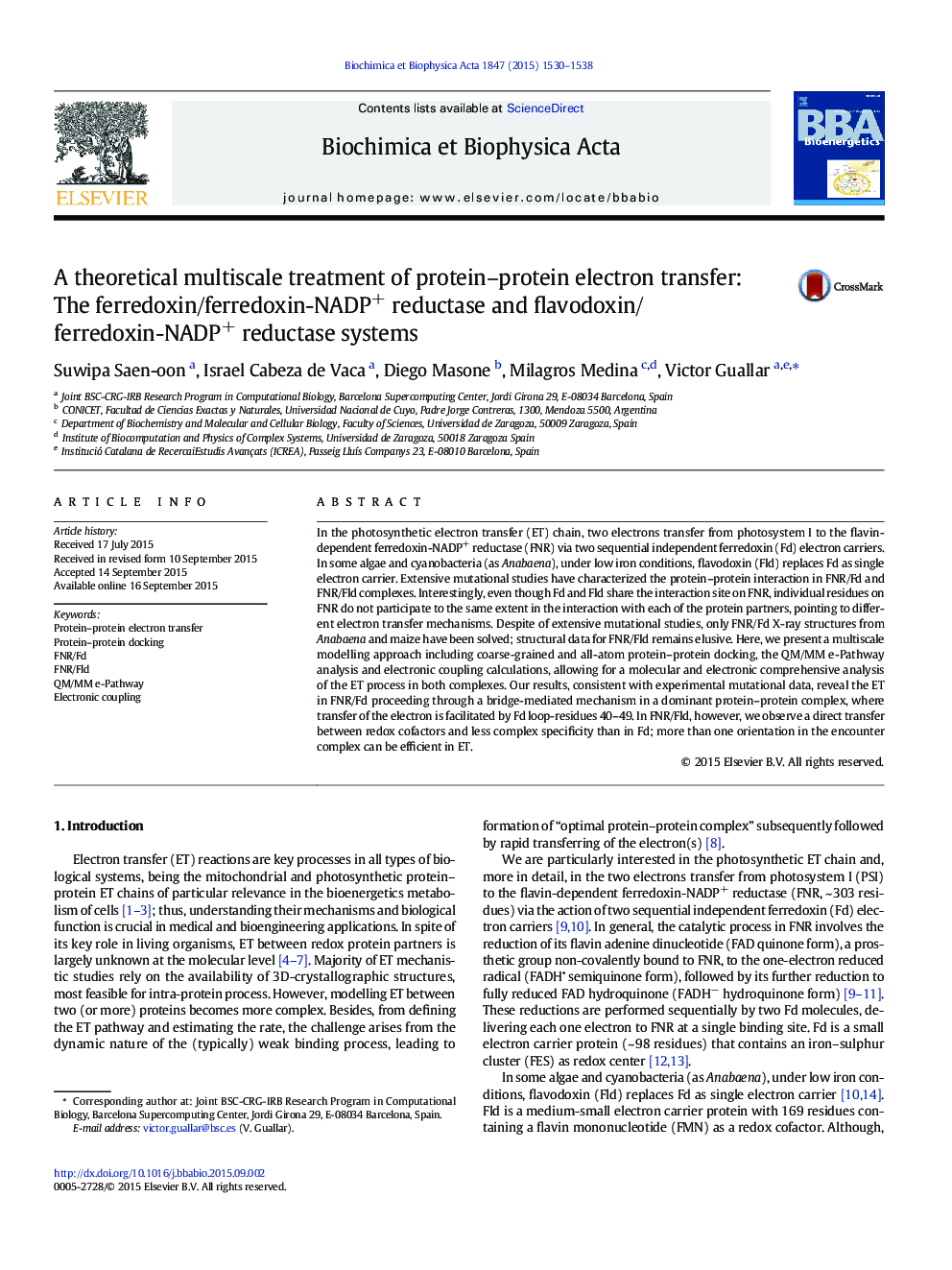| کد مقاله | کد نشریه | سال انتشار | مقاله انگلیسی | نسخه تمام متن |
|---|---|---|---|---|
| 1942075 | 1537040 | 2015 | 9 صفحه PDF | دانلود رایگان |

• Multiscale modelling allows for molecular and electronic extensive analysis of ET.
• In FNR/Fd we observe a bridge-mediated mechanism in a dominant protein complex.
• FNR/Fld proceeds by direct ET between redox cofactors with less complex specificity.
• Multiple mechanisms are adopted by similar proteins in the photosynthetic ET chain.
In the photosynthetic electron transfer (ET) chain, two electrons transfer from photosystem I to the flavin-dependent ferredoxin-NADP+ reductase (FNR) via two sequential independent ferredoxin (Fd) electron carriers. In some algae and cyanobacteria (as Anabaena), under low iron conditions, flavodoxin (Fld) replaces Fd as single electron carrier. Extensive mutational studies have characterized the protein–protein interaction in FNR/Fd and FNR/Fld complexes. Interestingly, even though Fd and Fld share the interaction site on FNR, individual residues on FNR do not participate to the same extent in the interaction with each of the protein partners, pointing to different electron transfer mechanisms. Despite of extensive mutational studies, only FNR/Fd X-ray structures from Anabaena and maize have been solved; structural data for FNR/Fld remains elusive. Here, we present a multiscale modelling approach including coarse-grained and all-atom protein–protein docking, the QM/MM e-Pathway analysis and electronic coupling calculations, allowing for a molecular and electronic comprehensive analysis of the ET process in both complexes. Our results, consistent with experimental mutational data, reveal the ET in FNR/Fd proceeding through a bridge-mediated mechanism in a dominant protein–protein complex, where transfer of the electron is facilitated by Fd loop-residues 40–49. In FNR/Fld, however, we observe a direct transfer between redox cofactors and less complex specificity than in Fd; more than one orientation in the encounter complex can be efficient in ET.
Journal: Biochimica et Biophysica Acta (BBA) - Bioenergetics - Volume 1847, Issue 12, December 2015, Pages 1530–1538